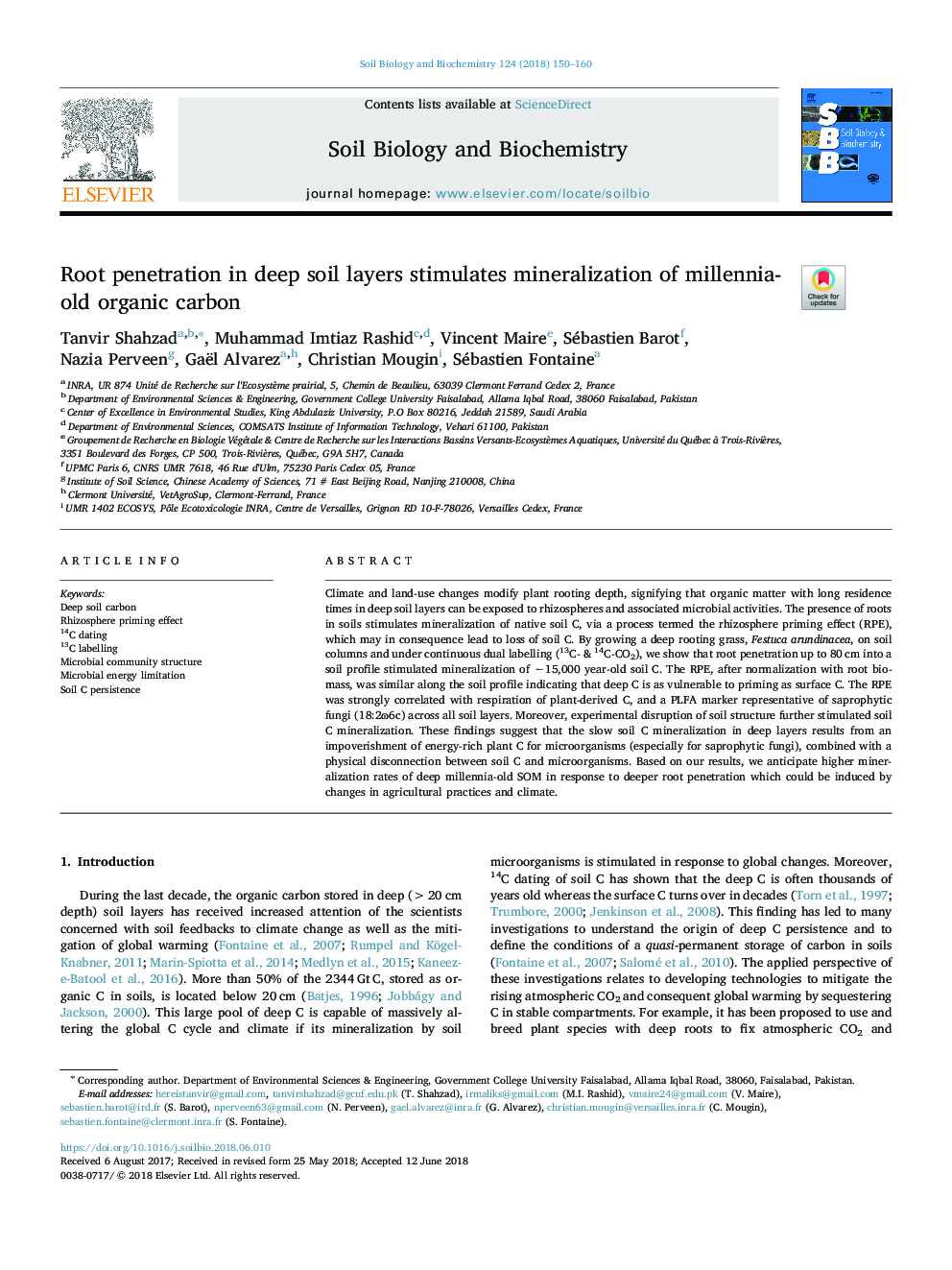| Article ID | Journal | Published Year | Pages | File Type |
|---|---|---|---|---|
| 8362567 | Soil Biology and Biochemistry | 2018 | 11 Pages |
Abstract
Climate and land-use changes modify plant rooting depth, signifying that organic matter with long residence times in deep soil layers can be exposed to rhizospheres and associated microbial activities. The presence of roots in soils stimulates mineralization of native soil C, via a process termed the rhizosphere priming effect (RPE), which may in consequence lead to loss of soil C. By growing a deep rooting grass, Festuca arundinacea, on soil columns and under continuous dual labelling (13C- & 14C-CO2), we show that root penetration up to 80â¯cm into a soil profile stimulated mineralization of â¼15,000 year-old soil C. The RPE, after normalization with root biomass, was similar along the soil profile indicating that deep C is as vulnerable to priming as surface C. The RPE was strongly correlated with respiration of plant-derived C, and a PLFA marker representative of saprophytic fungi (18:2É·6c) across all soil layers. Moreover, experimental disruption of soil structure further stimulated soil C mineralization. These findings suggest that the slow soil C mineralization in deep layers results from an impoverishment of energy-rich plant C for microorganisms (especially for saprophytic fungi), combined with a physical disconnection between soil C and microorganisms. Based on our results, we anticipate higher mineralization rates of deep millennia-old SOM in response to deeper root penetration which could be induced by changes in agricultural practices and climate.
Related Topics
Life Sciences
Agricultural and Biological Sciences
Soil Science
Authors
Tanvir Shahzad, Muhammad Imtiaz Rashid, Vincent Maire, Sébastien Barot, Nazia Perveen, Gaël Alvarez, Christian Mougin, Sébastien Fontaine,
